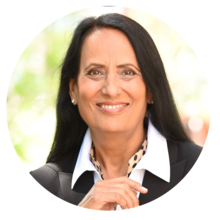About this Presentation
The nature of the system includes the subject matter, the goal, the necessary conditions, what governs the behavior of the system (values, culture, externalities, policies, measurements, behaviors, etc.) and how much influence do you have with which to effect change. The three question change sequence provides a system framework to identify the core problem (What to change), solve the system problem with a win-win solution (To what to change) and provide an implementation plan (How to cause the change). Two methods are described for identifying the core problem. First, one can build the current reality tree (CRT) from 8-10 undesirable effects (UDEs) to the core problem by asking why and using the categories of legitimate reservation. The core problem can be constructed as a conflict and its assumptions surfaced to identify and challenge an erroneous assumption. The second method of identifying the core problem is the three cloud approach. Three diverse UDEs are selected and a cloud built for each UDE. The clouds are then compared to construct a generic cloud that represents the three original UDEs and the remaining UDEs. The core conflict represented in the generic cloud is the cause of all the UDEs. By rotating this generic cloud 90 degrees and surfacing the cloud assumptions one can attach all of the UDEs to this base. The erroneous assumption is replaced with an injection providing the direction of the solution. From this injection the future reality tree is constructed by providing supporting injections to replace the UDEs with desirable effects (DEs). Two thinking processes are useful in responding to how to cause the change. These are the prerequisite tree and the transition tree. Several frequently asked questions are provided in addition to a couple examples for practice.
What Will You Learn
To help you get the most value from this session, we’ve highlighted a few key points. These takeaways capture the main ideas and practical insights from the presentation, making it easier for you to review, reflect, and apply what you’ve learned.

Identifying the core problem is crucial in any process. This can be done using UDIs or a current reality tree or a communications reality tree or the three UDI methods.
Cause and effect reasoning and the evaporating cloud technique are essential in finding solutions. These techniques help to identify erroneous assumptions and resolve core conflicts.
Implementing solutions involves identifying potential obstacles and creating a roadmap of intermediate objectives. This roadmap can then be used as the start of a project plan for solution implementation.
Instructor(s)
Alan H. Leader

Ms Alka Wadhwa
Alka Wadhwa is an experienced consultant and process improvement expert with over 24 years of expertise in the Theory of Constraints (TOC), Lean Six Sigma, and organizational performance optimization. She has successfully led projects in healthcare, financial services, and manufacturing, driving significant improvements such as a 67% boost in hospital operations and a 140% increase in outpatient visits.
Previously, Alka Wadhwa spent 17+ years at GE Global Research Center, where she led initiatives to enhance various GE businesses through advanced technologies, process redesign, and system optimization. Founder of Better Solutions Consulting, LLC, she specializes in using TOC, Six Sigma, and data analytics to streamline operations and build high-performance teams.
Her work has earned her multiple accolades, including the Empire State Award of Excellence in healthcare.

Dr Gary Wadhwa
Dr. Gary Wadhwa is a Board Certified Oral & Maxillofacial Surgeon with extensive experience in the field. He completed his Oral & Maxillofacial Surgery training at Montefiore Hospital, Albert Einstein College of Medicine in Bronx, NY, and has served as an Attending at prestigious institutions like St. Peters Hospitals, Ellis Hospital, and Beth Israel Hospital in NY. With a career spanning over two decades, he was the former CEO and President of a group specialty practice in NY from 1994 to 2015. Dr. Wadhwa holds an MBA from UT at Knoxville, TN, and has undergone additional training in System Dynamics at MIT, Health System Management at Harvard Business School, and Entrepreneurship and healthcare innovations at Columbia Business School. Committed to expanding access to Oral & Maxillofacial Surgery care, he is currently engaged in a meaningful project to provide healthcare services to underserved populations in inner city and rural areas through non-profit Community Health Centers.
